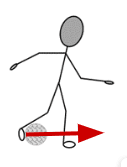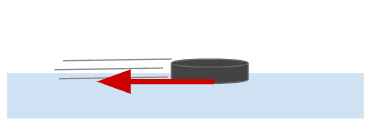Myths about teaching can hold you back
- Year 7
Friction
I can describe the characteristics of friction forces, explain what causes friction and describe how friction can be reduced.
- Year 7
Friction
I can describe the characteristics of friction forces, explain what causes friction and describe how friction can be reduced.
These resources were made for remote use during the pandemic, not classroom teaching.
Switch to our new teaching resources now - designed by teachers and leading subject experts, and tested in classrooms.
Lesson details
Key learning points
- Friction is the force of one surface gripping or rubbing on another.
- Friction prevents or slows down movement between surfaces.
- Friction is caused by the roughness of surfaces.
- Lubricants are substances added between two surfaces to reduce friction.
Keywords
Friction - Friction is the force of one surface rubbing or gripping on another.
Rough - Rough surfaces are uneven or irregular, they are not smooth.
Irregularities - An irregularity is something different to what is expected.
Microscopic - If something is microscopic, it is so small you need a microscope to be able to see it.
Lubricant - A lubricant is a substance added between two surfaces to reduce friction.
Common misconception
Friction is not a force.
Provide examples of friction slowing objects and preventing them from moving when they are pushed.
To help you plan your year 7 science lesson on: Friction, download all teaching resources for free and adapt to suit your pupils' needs...
To help you plan your year 7 science lesson on: Friction, download all teaching resources for free and adapt to suit your pupils' needs.
The starter quiz will activate and check your pupils' prior knowledge, with versions available both with and without answers in PDF format.
We use learning cycles to break down learning into key concepts or ideas linked to the learning outcome. Each learning cycle features explanations with checks for understanding and practice tasks with feedback. All of this is found in our slide decks, ready for you to download and edit. The practice tasks are also available as printable worksheets and some lessons have additional materials with extra material you might need for teaching the lesson.
The assessment exit quiz will test your pupils' understanding of the key learning points.
Our video is a tool for planning, showing how other teachers might teach the lesson, offering helpful tips, modelled explanations and inspiration for your own delivery in the classroom. Plus, you can set it as homework or revision for pupils and keep their learning on track by sharing an online pupil version of this lesson.
Explore more key stage 3 science lessons from the Forces unit, dive into the full secondary science curriculum, or learn more about lesson planning.

Licence
Prior knowledge starter quiz
6 Questions
Q1.Which is the best description of a friction force?
Q2.Which picture shows a friction force?



Q3.Which factor can affect the size of the friction force acting when an object slides over a surface?
Q4.Give the correct direction: Friction forces always act on a moving object.
Q5.Which sentences describe the correct effects that friction forces can have on objects?
Q6.An object is sliding along a surface. Which of the following can reduce the friction force?
Assessment exit quiz
6 Questions
Q1.Which best describes what a friction force is?
Q2.Which picture shows the friction force of the ice on the sliding puck?






